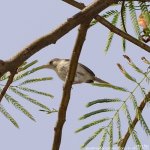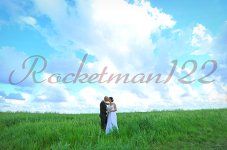I shoot mainly nature type images and was wondering if using Active D-Lighting is useful when photographing birds such as warblers etc. which often lurk in the shadows. I have up to this point left it off. One reason I ask is after shooting some turkey vultures recently I needed to manual adjust the shadows in post editing to bring out more detail on the dark bodies. Would having Active D-Lighting on give me better results in this case before doing any editing. Thanks for any info.
You are using an out of date browser. It may not display this or other websites correctly.
You should upgrade or use an alternative browser.
You should upgrade or use an alternative browser.
Active D-Lighting
- Thread starter 06Honda
- Start date
I shoot mainly nature type images and was wondering if using Active D-Lighting is useful when photographing birds such as warblers etc. which often lurk in the shadows. I have up to this point left it off. One reason I ask is after shooting some turkey vultures recently I needed to manual adjust the shadows in post editing to bring out more detail on the dark bodies. Would having Active D-Lighting on give me better results in this case before doing any editing. Thanks for any info.
I shoot RAW and use NX-D. Active lighting in NX-D is extremely useful for bringing out shadow details. You also have "Shadow Protection" and "Highlight Protection" functions where you can use a slider to highlight shadows/reduce highlights. At times Active D light is better and at times Shadow Protection, it is scene dependent.
I use these functions all the time as in harsh light there is a lot of information in shadows. The only down side is that there is a lot of noise at higher ISO, hence I shoot mostly at ISO 100 (at the most 400), if I need to recover shadows.
If the main subject; in your case birds; are in shadow, then use "Spot Metering" and focus on the bird in shadow. The bird will be well exposed, though the rest of scene may be washed out. If I want the bird, then the rest may not matter. Here is an example

Fred Kingston_RIP
Senior Member
Nikon Active D-Lighting, Raw and Lightroom - DON'T!! - Photo.net Nikon Forum
Active D-Lighting is not so good if you shoot RAW
Active D-Lighting is not so good if you shoot RAW
When I first shot my local high school's drama productions, they were jpegs with Active-D lighting off. It was difficult to bring out details in the shadow areas. Then once I heard about it, there were more details showing up in the shadowed areas making a big improvement. I used it on the highest setting. Enabling it will lower your contrast, but you can change that during post processing.
rocketman122
Senior Member
I use active dlighting a lot, but when the lighting is very contrasty. your situation wouldnt help because you have consistent lighting in that situation. its not the situation to use adl. just exposure will do the trick.
1 thing I will say regarding nikon cameras (dont know any other) metering and flash metering has not advanced 1 iota since the days of film shooting with F5's (first 1005 3d color matrix metering) at weddings. not one. they upped the fps, better wb but metering and flash metering in ttl is crap till now. a little backlight or a small light ray comng in the frame and it underexposes. its garbage in every respect.
I never use active dlighting past normal since it gets a bit too extreme and looks quite bad. if the scene in the shadowed area is patches of light coming in then using adl will help a bit. at least you have the detail in the image so you have a wider dynamic range to edit later.
I dont shoot weddings in raw. but at times when I shoot the groom and bride outdoors I will shoot with adl in harsh situations. like here (sorry for the brutal watermark -had images stolen recently)

here I had a bright white sky and the grass would be underexposed had I metered for that. I shot a few exposures and took one that I could work with. in acdsee pro I lowered the highlights a bit more, upped the shows a bit, then did levels and some contrast to my liking. easy peasey.
1 thing I will say regarding nikon cameras (dont know any other) metering and flash metering has not advanced 1 iota since the days of film shooting with F5's (first 1005 3d color matrix metering) at weddings. not one. they upped the fps, better wb but metering and flash metering in ttl is crap till now. a little backlight or a small light ray comng in the frame and it underexposes. its garbage in every respect.
I never use active dlighting past normal since it gets a bit too extreme and looks quite bad. if the scene in the shadowed area is patches of light coming in then using adl will help a bit. at least you have the detail in the image so you have a wider dynamic range to edit later.
I dont shoot weddings in raw. but at times when I shoot the groom and bride outdoors I will shoot with adl in harsh situations. like here (sorry for the brutal watermark -had images stolen recently)

here I had a bright white sky and the grass would be underexposed had I metered for that. I shot a few exposures and took one that I could work with. in acdsee pro I lowered the highlights a bit more, upped the shows a bit, then did levels and some contrast to my liking. easy peasey.
I shoot only RAW and implement active D lighting in PP. If I shoot images where the shadow details need to be recovered or the lighting is harsh, I can always implement the settings in batch mode, and that takes very little time, so I find no reason to shoot jpeg, when RAW gives me much more latitude, and takes very little time if the exposure and framing were correct in the camera.
